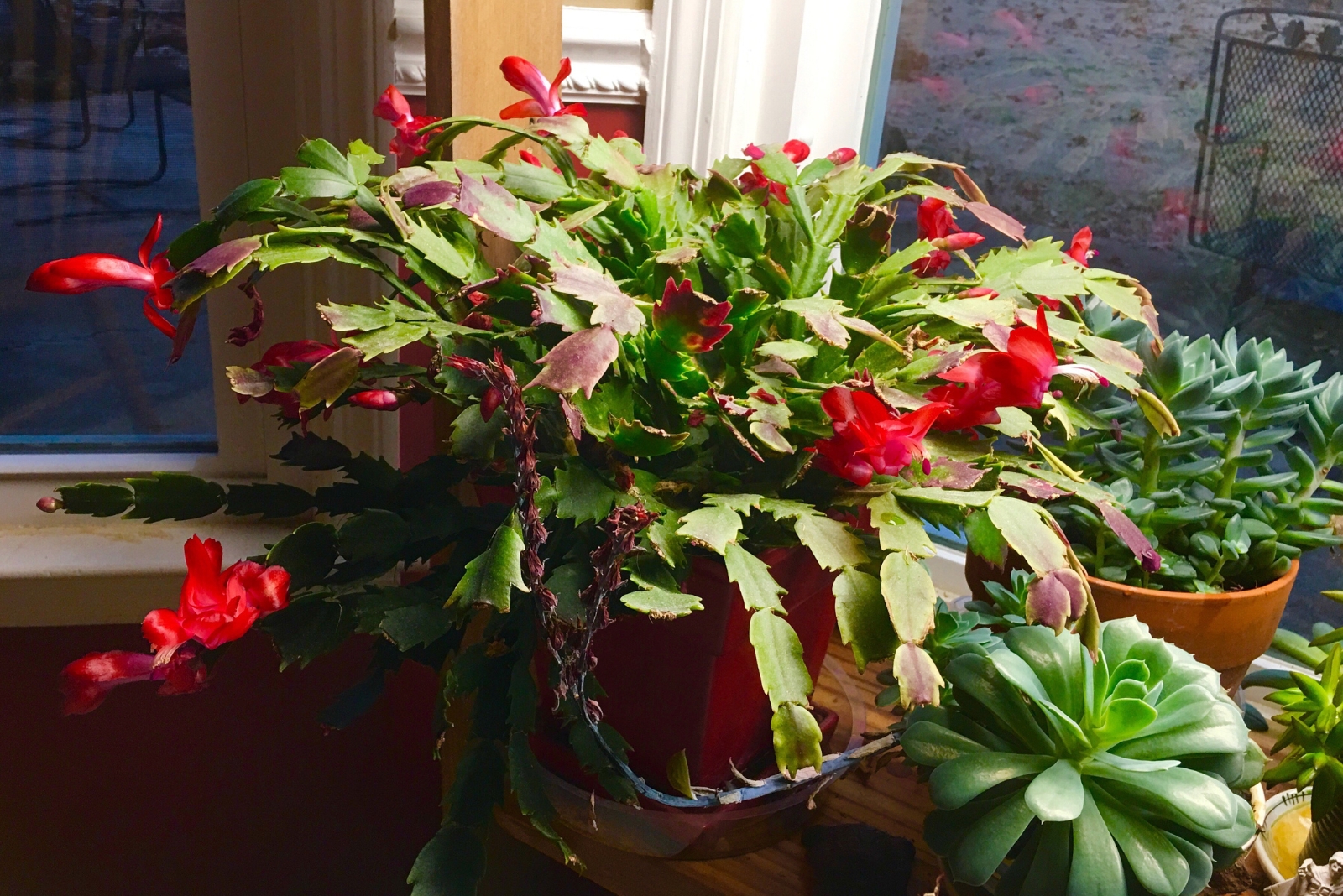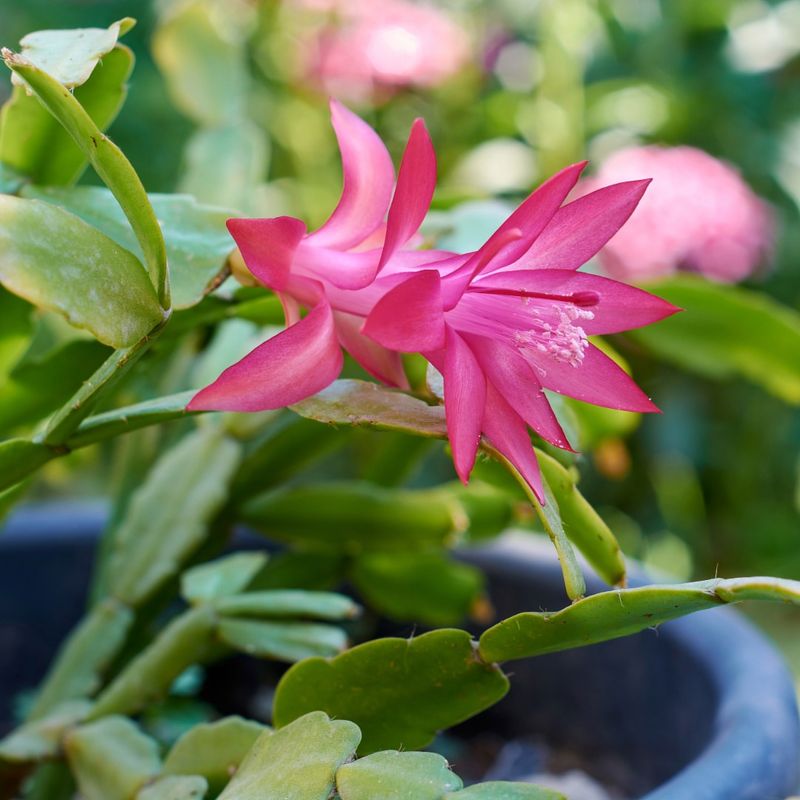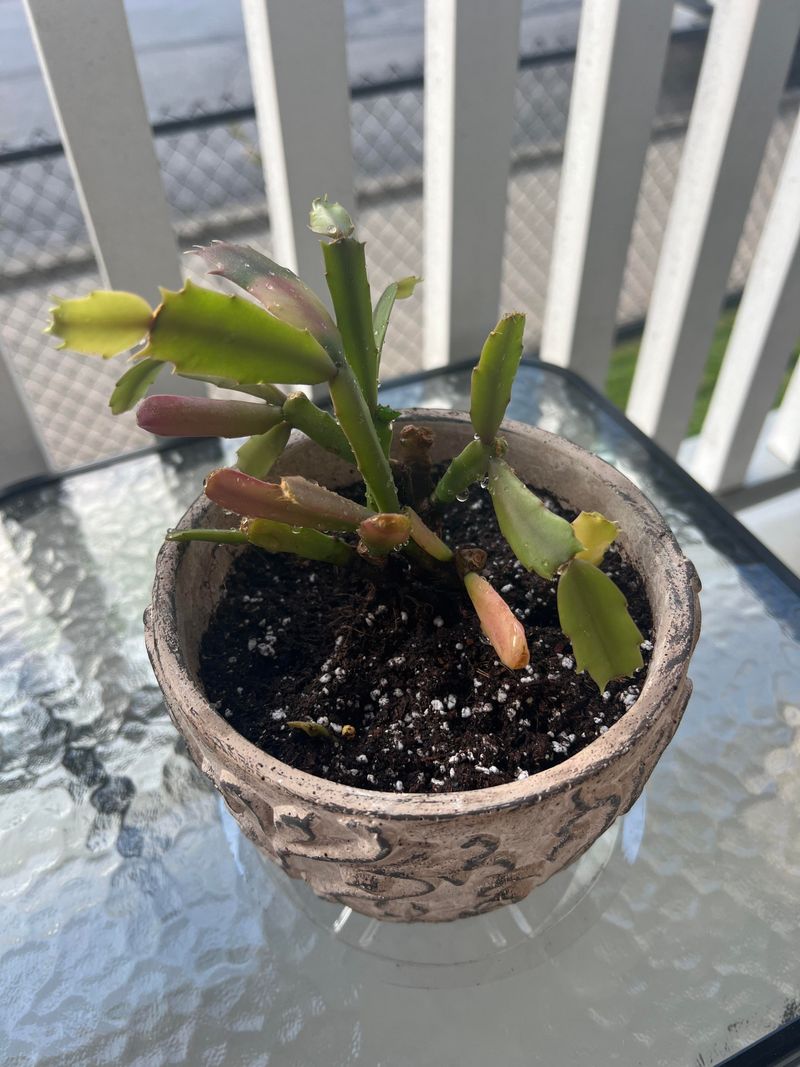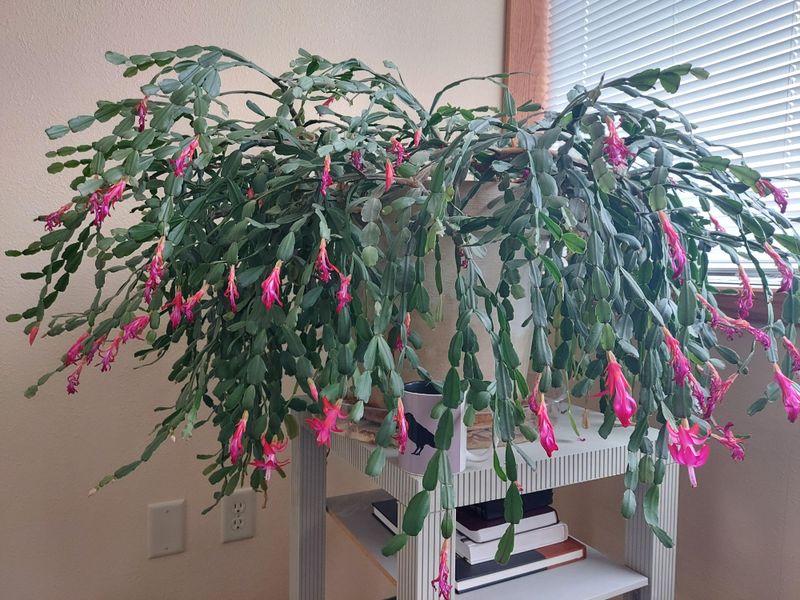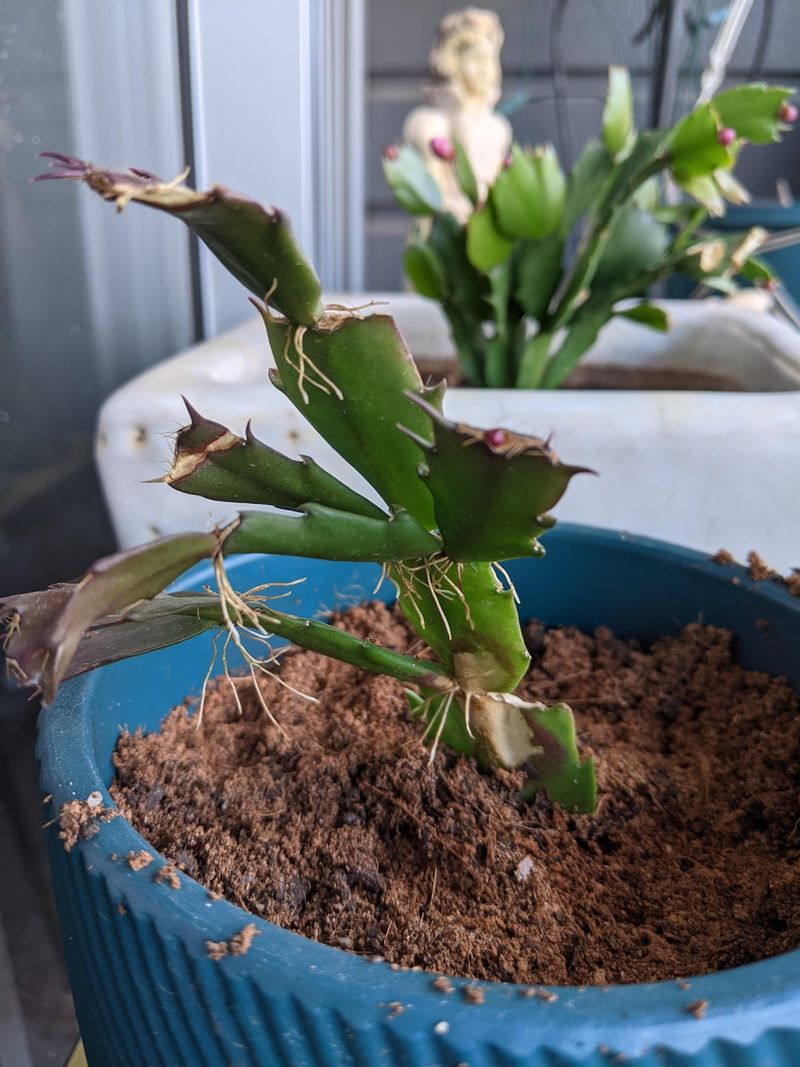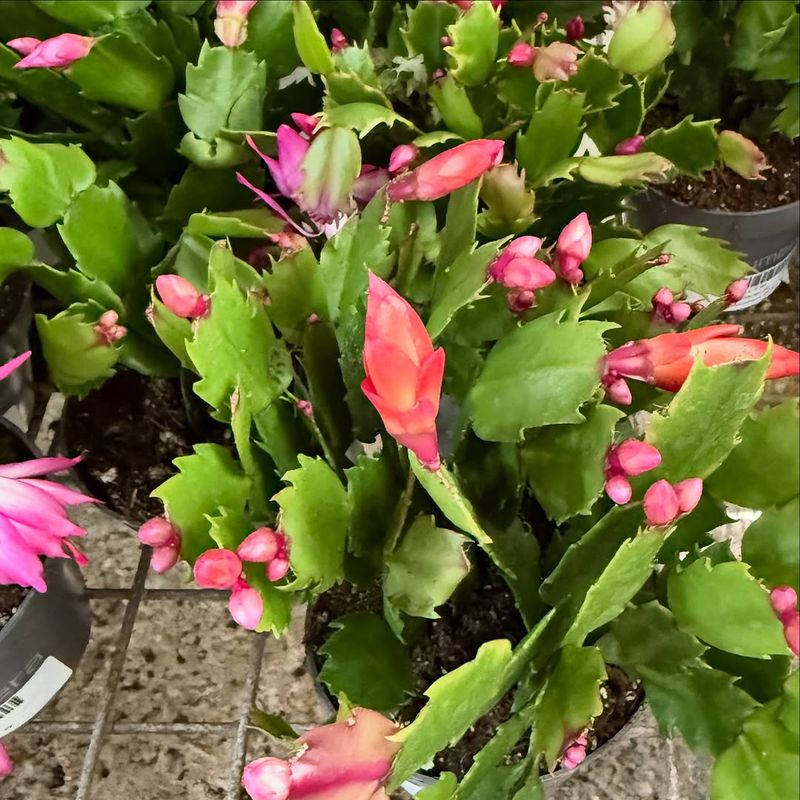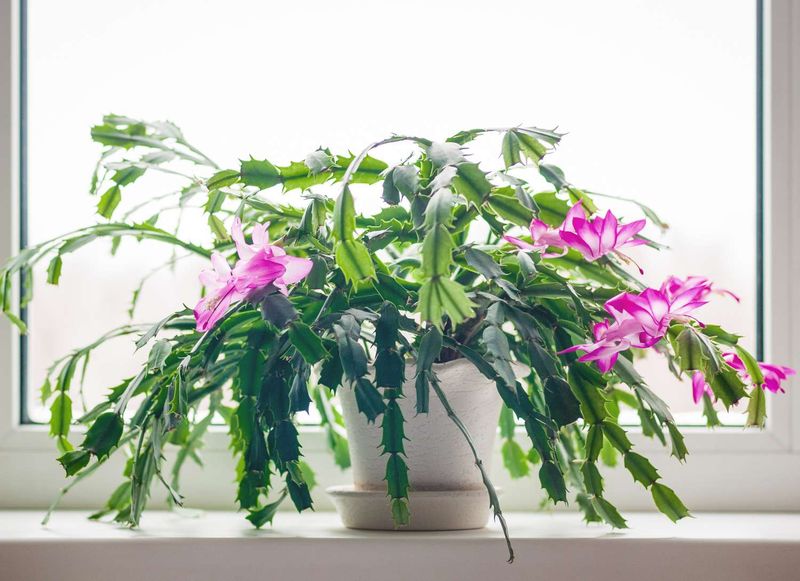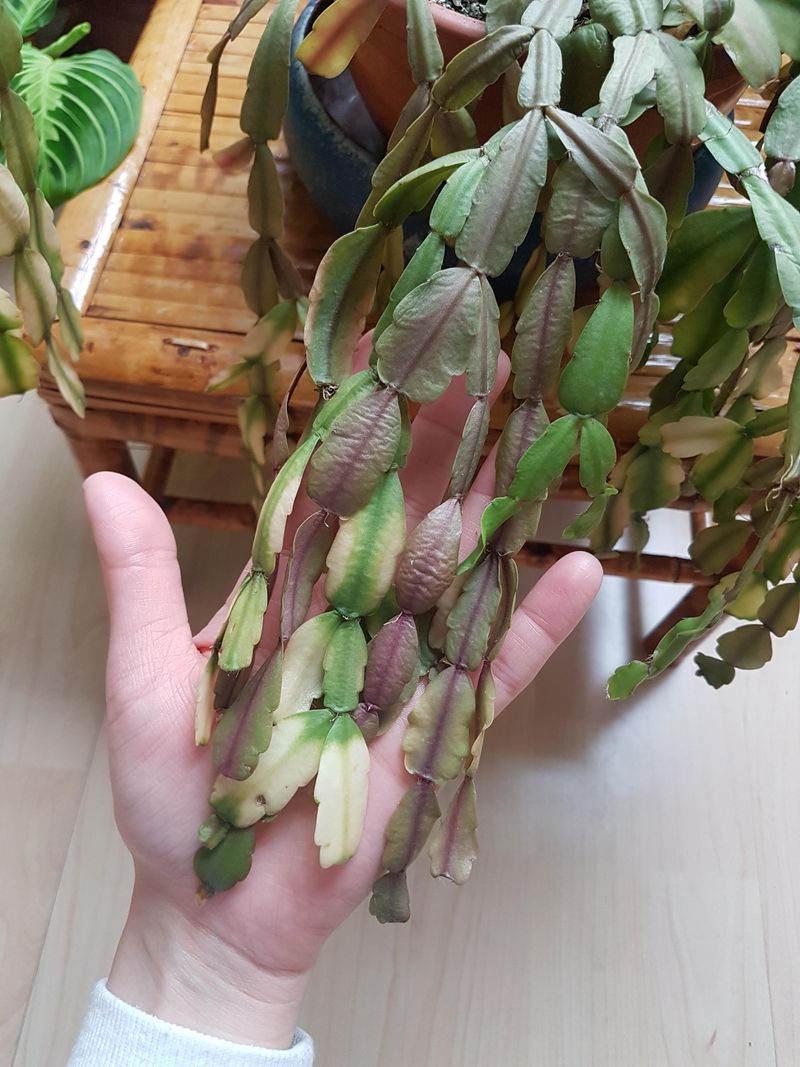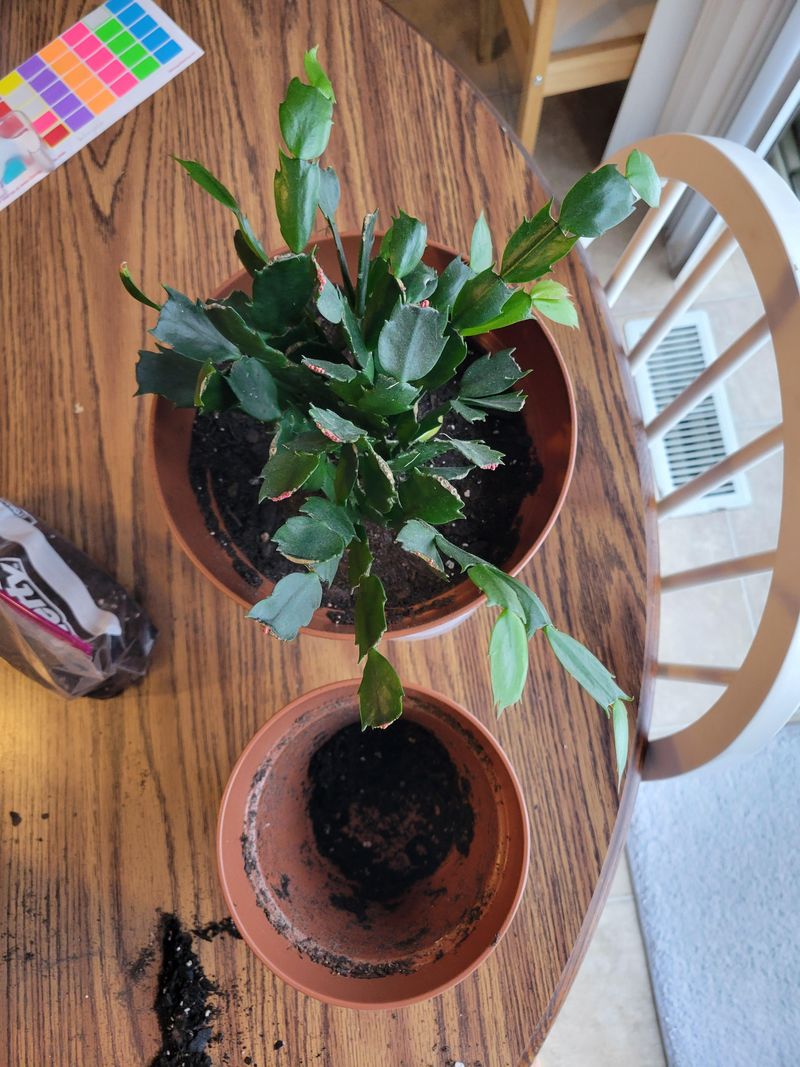Christmas cacti bring stunning blooms to Texas homes during the holiday season, but many gardeners accidentally harm these tropical plants by treating them like desert cacti.
Understanding the unique needs of Christmas cacti is essential for keeping them healthy and encouraging those beautiful flowers year after year. Texas climate and common misconceptions can lead to serious care mistakes that prevent your plant from thriving.
1. Treating It Like A Desert Cactus
Christmas cacti actually come from Brazilian rainforests, not dry deserts. They grow naturally on tree branches where they receive filtered light and regular moisture.
Many Texas gardeners make the mistake of placing them in full sun with minimal water, which causes the leaves to shrivel and turn red from stress. Your Christmas cactus needs more water and shade than you might expect.
Keep the soil consistently moist but never waterlogged for best results.
2. Placing It In Direct Texas Sunlight
Intense Texas sunshine can quickly damage Christmas cactus leaves, causing them to turn yellow or develop brown scorch marks. These plants prefer bright, indirect light similar to what they receive under forest canopies in their native habitat.
A north or east-facing window works perfectly in Texas homes. If you only have south or west windows, place the plant several feet back or use sheer curtains to filter the harsh afternoon rays.
3. Overwatering During Dormancy
After blooming ends, Christmas cacti enter a rest period where they need less water. Many Texas gardeners continue their regular watering schedule, which leads to root rot and mushy stems.
During late winter and early spring, reduce watering frequency and let the top inch of soil dry out between waterings. Your plant uses this time to gather energy for next season’s blooms, so backing off on water actually helps it thrive.
4. Ignoring Temperature Fluctuations
Christmas cacti are sensitive to sudden temperature changes, which Texas weather delivers frequently. Placing your plant near air conditioning vents, heaters, or drafty doors can stress it and cause bud drop.
Maintain temperatures between 60 and 70 degrees Fahrenheit for optimal growth. Avoid moving the plant once buds form, as even small environmental changes can cause those precious flowers to fall off before opening completely.
5. Using The Wrong Soil Mix
Regular potting soil holds too much moisture for Christmas cacti, creating conditions perfect for root rot. As epiphytes, these plants need excellent drainage and air circulation around their roots.
Mix equal parts potting soil, perlite, and orchid bark to create an ideal growing medium. This combination mimics their natural environment and prevents water from sitting around the roots. Well-draining soil is absolutely crucial for long-term plant health and vibrant blooms.
6. Forgetting About Humidity Needs
Texas air can be quite dry, especially during winter when heaters run constantly. Christmas cacti prefer humidity levels around 50 percent, and dry air causes leaf segments to wrinkle and become thin.
Place a shallow tray filled with pebbles and water beneath your plant’s pot to increase local humidity. You can also group several plants together or use a small humidifier nearby. Misting helps temporarily but isn’t a long-term solution.
7. Skipping The Dark Period For Blooming
Christmas cacti need 12 to 14 hours of complete darkness each night for about six weeks to set flower buds. Outdoor lights, streetlamps, or even nightlights can interfere with this process in Texas neighborhoods.
Starting in early October, place your plant in a room where it receives true darkness from evening until morning. Even brief light exposure during dark hours can prevent blooming, leaving you with a healthy but flowerless plant during the holidays.
8. Over-Fertilizing Throughout The Year
Enthusiastic Texas gardeners often give their Christmas cacti too much fertilizer, thinking more nutrients equal more flowers. Excess fertilizer actually damages roots and causes salt buildup in the soil.
Feed your plant with a balanced, water-soluble fertilizer diluted to half strength only during spring and summer growing months. Stop fertilizing completely in fall when you want the plant to focus on bud development. Less is definitely more when it comes to feeding these beautiful bloomers.
9. Repotting Too Frequently Or At Wrong Times
Christmas cacti actually bloom better when slightly rootbound, so frequent repotting can reduce flowering. Many Texas gardeners repot too often or choose pots that are too large.
Only repot every two to three years, and do it right after blooming ends in late winter or early spring. Choose a pot just one size larger than the current one. Repotting during bud formation or blooming causes stress that makes flowers drop immediately.

